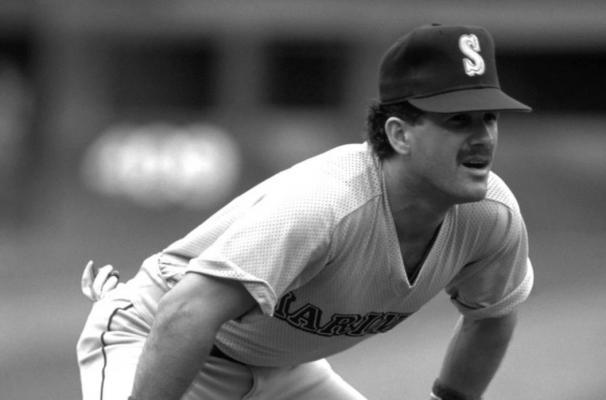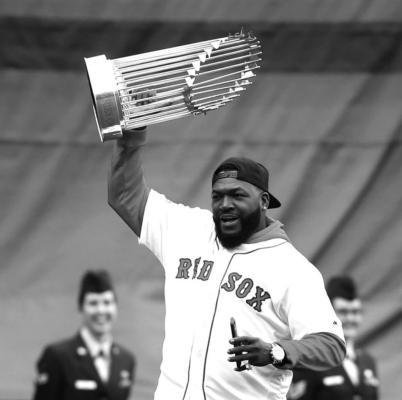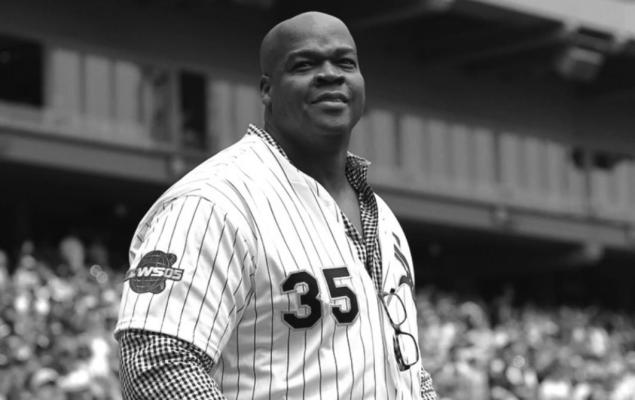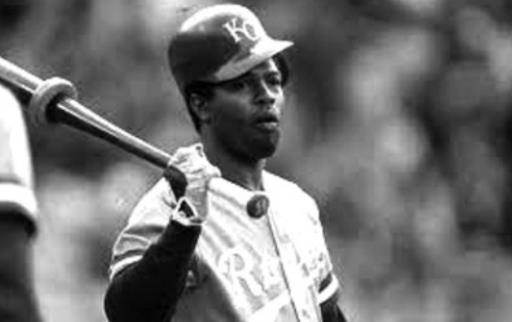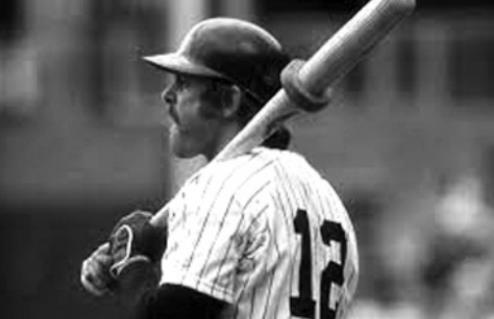Designated hitter here to stay (apparently)
Very, very quietly Major League Baseball reached a milestone at the beginning of this baseball season. At least it is my impression that it has been reached quietly. I have heard very little discussion about it during the moments I have listened to the wisdom of TV’s talking heads.
The subject of which I am addressing is that beginning this season the designated hitter rule is universal. The National League is no longer the only holdout from adopting the rule. The St. Louis Cardinals, Los Angeles Dodgers and Chicago Cubs all have designated hitters along with all the other National League teams.
I would have never predicted the quiet acceptance of this onetime very controversial rule. As recently as six years ago, in my workplace I overheard a very loud and fervent debate about the value or lack of value of having designated hitters. “The DH (designated hitter) impugns the integrity of baseball,” is what I remember one of the ardent debaters saying.
I remember when the American League first adopted the designated hitter rule. It was in 1973 and I was working on a newspaper in Decatur, Ill. Most of my friends either claimed to be St. Louis Cardinals or Chicago Cubs fans. The rivalry was intense there and throughout Central Illinois. I presume nothing has changed in the 45 years since I moved from the region. With the majority of my friends rooting for either the Cardinals or Cubs, they had nothing but disdain for the American League at any time and made fun of those few American League (White Sox) supporters for what they described as a “wimpish” rule.
I had grown up in Kansas, which, because of the Athletics moving into Kansas City in 1955, had become somewhat American League territory. I say somewhat, because there still were many Cardinals fans in the region. I had become an American League fan along with many others where I lived and carried that identification with me to Illinois. Although I have strong opinions on politics and baseball, I tend not to get involved in arguments concerning either topic. I guess I never have thought that me expressing my opinion was likely to change the mind of someone who violently disagreed with me. So, I let the Cardinals and Cubs fans make fun of the designated hitter rule without offering much in the way of rebuttal.
I am a traditionalist at heart, so there was a part of me that didn’t like the rule change. But as time went past, I became a supporter. There were a lot of players who because they were aging and not as agile in the field, got to bat due to the new rule. As a Kansas City Royals fan in the 1970s, I loved to see Hal McRae bat. That probably wouldn’t have happened without the DH rule, because McRae wasn’t a very good defensive player.
Since the rule now includes the National League, I looked up some history. I hadn’t been aware that none other than Connie Mack, the Philadelphia Athletics owner-manager of years gone proposed adopting such a rule in 1906. And my source noted that he hadn’t been the first to make such a suggestion. Mack had such future Hall-of-Fame pitchers as Eddie Plank and Chief Bender, who were notoriously poor hitters. After watching Plank flail away weakly and strike out on three pitches every time he batted in a 1906 game, Mack was overheard to mutter something like, “It is ridiculous to have to watch such ineptitude at the plate. We need to do something.” Mack was a businessman as well as a baseball guru, and he thought that not many people would pay money to see such weak hitting. He did make a formal proposal, but it received very little support. It was proposed again in the 1920s and National League President John Heydler made a number of attempts to get support for such a rule. His thought was that it would help speed up the game. The idea bounced around and finally got some sizable support after the 1968 season when pitchers dominated the sport. Denny McLain won 31 games that year and Bob Gibson had an ERA of 1.12. Some rules changes were adopted because of a fear that pitchers were taking over the game -- the mound was lowered and the strike zone was made smaller. Both leagues experimented with the DH in Spring Training, but it was optional and most National League teams chose not to participate. Minor Leagues did adopt the DH in 1969. In 1973, American League owners voted 8-4 to adopt the DH and the rest is history.
American League attendance went up considerably after 1973 and in 1980 the National League, taking note, put the idea up to a vote. It needed only approval of seven of the 12 teams. One general manager (Phillies) abstained because he wasn’t sure how his owner wanted him to vote. The owner was on a fishing trip and unavailable to help make the decision. The Pirates general manager was instructed to vote however the Phillies did, so he abstained as well. Four teams voted for the proposal, five voted against and three abstained. The Houston Astros, then in the National League, for some unknown reason also abstained. The Cardinals general manager had been pushing for a DH, and five days after the meeting was fired. There was never another proposal made in the NL to adopt the DH. Interleague play, including the World Series, has forced National League teams to employ a DH when they were the visitors and the opposition has weakened to the point the change having been made without much fanfare.
There is some debate about who has been the best designated hitters since the rule was adopted in 1973.
If I were to make a list, it would include Edgar Martinez, David Ortiz, Paul Molitor, Harold Baines, Frank Thomas, and of course, Hal McRae.
McRae was part of the great Kansas City Royals teams of the 1970s and 1980s. He started his career in Cincinnati and played there from 1968 to 1972. He came over to the Royals in 1973 and fit in quite well there in the first year of the DH. He was an outfielder in the NL, but a not-very-good one and the Reds were looking to pawn him off on some American League team as a potential designated hitter. His best year was in 1982 when he led the American League in RBIs with 133. He hit 27 home runs and batted .308. Later he became the Royals manager and is maybe best known for throwing a fit at an umpire’s call. His reaction has been a popular staple for YouTube viewers.
David “Big Papi” Ortiz, may have been one of the most popular baseball players in recent years. He is known mostly for his 14 years with the Boston Red Sox. Big Papi played first base, but the Red Sox used him primarily as designated hitter. He also was well known for being the victim of a shooting in a Dominican Republic bar in 2019, that nearly took his life. It was later determined that Ortiz was not the intended victim of the shooter, but was mistaken for a regular patron of the bar, who got crosswise with a Dominican drug cartel. Ortiz was instrumental in the Red Sox breaking an 86-year World Series Championship draught in 2004 and later winning the World Series in 2007 and 2013. For his career he hit 541 home runs (485 as a DH), 1,768 runs batted in (1,569 as a DH), and a .286 batting average. His 2,192 hits are the most of any DH.
Edgar Martinez was a good enough designated hitter that they named an award (to the best designated hitter) after him. He played for the Seattle Mariners from 1987 through 2004. When he didn’t DH, he was a third baseman, just in case you were wondering. He had a lifetime batting average of .312, and was inducted into Baseball’s Hall of Fame in 2019.
Molitor was a Hall-of-Fame player for the Milwaukee Brewers and extended his career as a DH. He started out playing at third base for the Brewers and played for them from 1978 to 1992. He also played for Toronto (1993-1995) and Minnesota (1996-1998) where he was strictly a designated hitter. The Brewers, by the way, were in the American League when he played there.
Harold Baines was an outfielder, but it didn’t take long for managers to switch him to DH. Another member of the Hall of Fame, he played for a bunch of teams including the Chicago White Sox, Texas Rangers, Oakland Athletics, Baltimore Orioles, White Sox again, Orioles again, Cleveland Indians, Orioles again and White Sox again before retiring in 2001.
Frank Thomas was a first baseman but became a designated hitter later in his career. He played for the Chicago White Sox from 1990 to 2005. He also played for Oakland and Toronto briefly. He was inducted into the Hall-of-Fame in 2014. During his career, he was AL MVP twice and won the batting title in 1997. His nickname is “Big Hurt” and he can be seen on TV hawking a testosterone booster.
Now that the DH is universal, I wonder who will be the next one to make the Hall-of-Fame.

